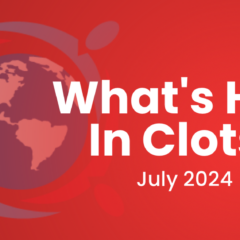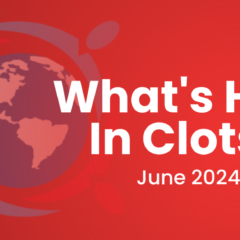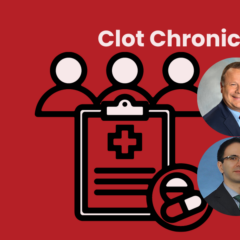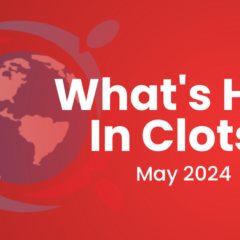Last updated on
Clot Chronicles: COVID-19 and Thrombotic Disease – Prevention and Management
Hi, this is Dr. Behnood Bikdeli from Columbia University Irving Medical Center, Yale Center for Outcomes Research and Evaluation, and the Cardiovascular Research Foundation in New York. In this episode of Clot Chronicles, I wanted to discuss considerations for the prevention and management of thrombotic disease in the face of the COVID-19 pandemic.
So, I think of this in a few big buckets. One of them is how do we provide optimal care or try to treat patients with COVID-19 who suffer from thrombotic events? That’s one. How do we use technology in the best way possible to provide optimal care to patients who have had thrombotic disease in the past and need to adhere to social distancing measures but still need care during this pandemic? How we do we optimally use the resources from different societies and funders, etc. to foster more knowledge generation?
To start off, I think among patients with COVID-19, we can think of the disease in different categories of severity. The most important category, obviously, is people with moderate-to-severe disease. And recently, we coalesced an international collaborative of investigators and clinicians to help address some of the unmet needs in this area. I think, at this point, it’s reasonable to consider that for patients with moderate-to-severe COVID-19 who get hospitalized, risk stratification for prevention of venous thrombosis is very critical. And for people who are deemed to be high-risk, as long as there are no contraindications, use of pharmacological prophylaxis is one of the important things to consider.
Now, an unknown/uncertain area for future investigation is what the optimal dose is for prophylaxis. That’s, I think, for the moment, something to be answered in future prospective studies. But within our panel, the majority recommended guideline-directed prophylactic dosing.
We also see a lot of hemostatic derangements in patients with COVID-19. That’s part of the reason we think they’re very much predisposed to thrombotic events. In terms of how to optimally track that and manage that, I think the key is to have an index of suspicion and do appropriate testing. But as of now, our panel did not recommend routine screening, including with bilateral ultrasound, in the absence of clinical suspicion.
Aside from the inpatients, I think another area that is very critical to discuss is what to do when patients with COVID-19 pass the period of hospitalization or are about to get discharged. Now, we know from some other randomized controlled trials in acutely ill medical patients that use of extended pharmacological prophylaxis might be a successful strategy to reduce the risk of thrombotic events; obviously, that comes with the risk of excess bleeding. So, I think at this point, it’s also very reasonable to weigh the risks and benefits of extended pharmacological prophylaxis at the time of hospital discharge and use prophylaxis in select cases wherein we think the risk of VTE exceeds the risk of bleeding.
Similarly, some patients might just have mild COVID-19 – but with social distancing, they might be isolated and homebound or even bedbound, which can dramatically increase the risk of VTE. Even though there is no direct data in that field, I think it’s fair to extrapolate from other studies. Our panel feels that on a case-by-case basis in that group of people, it might be reasonable to consider VTE prophylaxis.
The last thing that I wanted to touch upon is patients who have known thrombotic disease but don’t have COVID-19 – how do we provide them with optimal care? First, just to demystify some existing confusion on the web, there is no evidence to date or to the best of my knowledge that using antithrombotic agents confers any risk for getting the disease or having severe COVID-19. Rather, it’s probably the underlying risk factors and cardiovascular disease that might confer some risk.
And how do we manage people who take vitamin K antagonists? Obviously, if their international normalized ratio (INR) is well controlled, that would be less of a challenge. But for people who have a labile INR, and in cases that there are no contraindications, a reasonable alternative, I think, could be to either use a drive-through INR machines or home INR. If these options aren’t possible, the last alternative would be to consider direct oral anticoagulants (DOACs) as long as there is no contraindication, the patient population fits the existing randomized trial data to support their use, and the patients are able to afford the medication.
There are also a couple of important considerations for societies and funders. I think now is a time of collaboration and professional societies should try to coalesce efforts to generate and disseminate more knowledge. As far as funders are concerned, I think we have so many knowledge gaps and funders could be very helpful in promoting knowledge generation, as has been occurring recently with the American Heart Association, National Institute of Health, and others.
Thank you very much for your attention.



